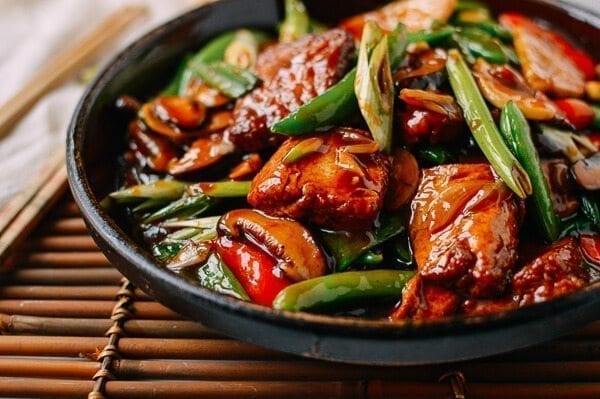Oyster sauce can be found in a variety of Chinese and Asian recipes, including many of the recipes on this site. It’s also included in our list of 10 Essential Chinese Pantry Ingredientsfor good reason.
A sauce made from oysters may sound a little bit scary, but it is actually quite mild, and adds a blast of flavor and umami to dishes.
If you don’t already have a bottle of this stuff, you need to get your hands on some! It deserves a spot in your refrigerator door—right next to the ketchup and mustard.
As Bill’s father, a chef, used to say, “if you want to make any dish taste better, just add oyster sauce.”
What is Oyster Sauce?
Oyster sauce (háo yóu, 蚝油) or “ho yeow” in Cantonese dialect, is a savory sauce that is commonly used in Chinese cooking. Traditionally, it was used mostly in Cantonese cooking and southern Chinese cuisine due to the proximity of the fertile oyster beds off the coast of Hong Kong and Guangdong. Since then, it has spread to many different types of Chinese cooking and has become a very popular ingredient in many Asian recipes.
Made with primarily with oyster extract, it’s a dark brown color and quite thick, with a viscosity and texture similar to ketchup or barbecue sauce, it’s really an all-purpose seasoning sauce.
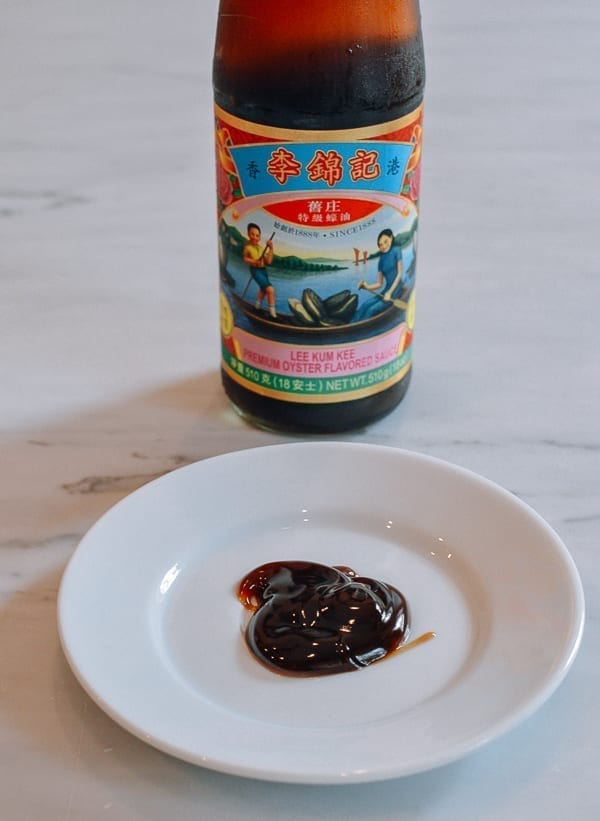
Traditionally, the sauce was made by simmering oysters in water until the liquid caramelized and reduced into a flavorful sauce. Today, manufactured versions called oyster flavored sauce, include sugar, salt, and cornstarch thickeners, with oyster flavoring and sometimes MSG (though you can find MSG-free versions).
What Does It Taste Like?
As for the taste, oyster sauce doesn’t actually taste strongly of oysters but it does have the same undertones of the briny umami taste of oysters. From its name, you may think it tastes of the ocean but in fact, it’s much less funky than say, fish sauce. Instead, it’s salty, sweet, and savory and really an essential pantry item that enhances the flavor and appearance of just about any dish.
How Is It Used?
Oyster sauce features primarily in Cantonese cooking, but Chinese chefs in other regions also prize it for its umami-enhancing capabilities.
It can essentially serve as an all-purpose seasoning for tofu, meat, vegetable, and seafood dishes. Add a teaspoon or two to just about anything, and you won’t be disappointed with the result.
We’ll often add a teaspoon or two of oyster sauce to meat marinades for stir-fries, and add a tablespoon to sauces and braises. It really has a way of enhancing the flavor of any meats used in stir fries.
Oyster sauce is a favorite condiment served alongside just about any dish but some that come to mind right away are dim sum favorites like Chinese stuffed peppers, Hakka style stuffed tofuand of course, Lo Bak Go daikon radish cake.
One vegetable side dish, common in dim sum and other Cantonese restaurants, is as simple as it gets. It features blanched leafy greens like Chinese broccoli or choy sum, drizzled with oil, perhaps a dash of sesame oil, and of course, oyster sauce. Check out our recipe here.
This ingredient is also a heavy hitter in one of Sarah’s favorite dishes: our Ultimate Braised Tofuadding umami and richness to an otherwise vegetarian dish.
To really get an idea of how great this stuff is, though, try our Sticky Oyster Sauce Chicken. This condiment/seasoning is the true star of this incredibly simple dish.
When you’ve tasted the chicken and rich sauce over a bed of steamed rice, you’ll understand why Chinese cooks love it.
Buying & Storing Oyster Sauce
You’ll see different brands at different price points in the Chinese grocery store. Avoid any products that are less than $2 or any found in the “ethnic” section of a local mega mart. They likely have artificial flavorings.
It’s best to buy a higher quality, more expensive product in your local Chinese market or online. Even an expensive bottle should be less than $5 or $6. One bottle will last you a long time, even if you cook our recipes a few times a week!
We generally use Lee Kum Kee’s Premium Oyster Sauce. (Lee Kum Kee’s founder, Lee Kum Sheung, is said to have accidentally invented the stuff when he left a pot of oysters boiling for too long.)
In the photo below, you’ll see Lee Kum Kee’s standard product on the left, and their premium product on the right. The standard stuff usually costs between $2-3, while the price of a premium bottle is usually around $5.
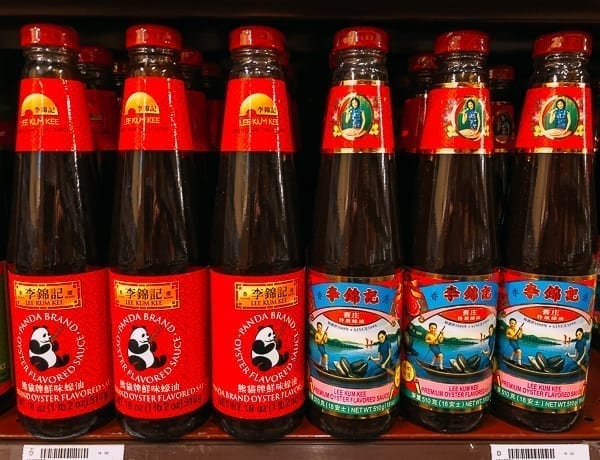
If you don’t mind splurging, try Megachef Oyster Sauceavailable online at The Mala Market for $14. It is a super premium brand, which we like to use either as a dipping sauce (for Radish/Turnip Cake) or as a condiment (like on our Chinese Broccoli with Oyster Sauce).
It’s significantly sweeter than LKK Premium Oyster Sauce, and also thinner (more pourable), which makes it more suitable as a condiment than as a cooking sauce in our opinion. It also happens to be gluten-free, if that’s important for you!
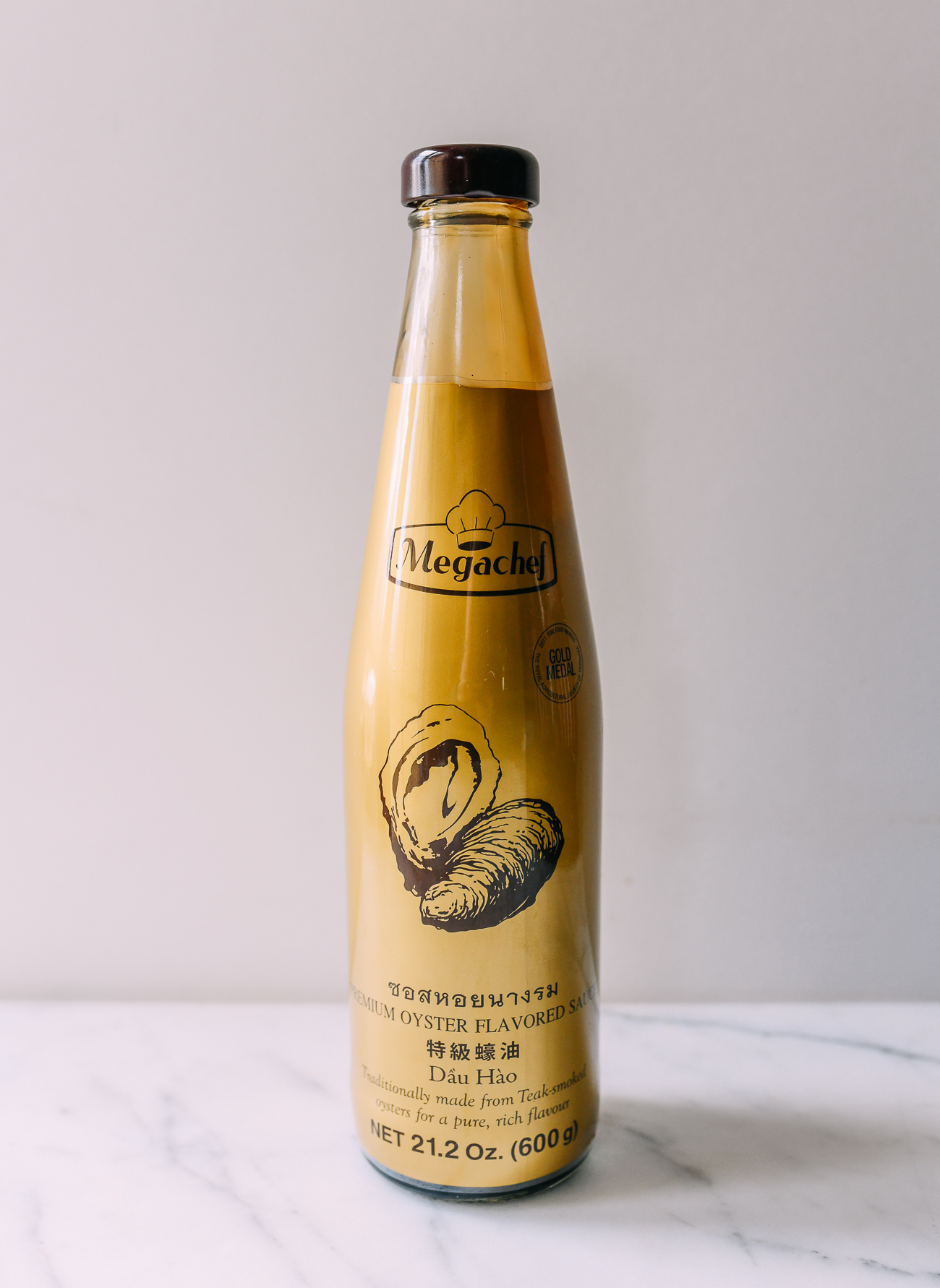
Refrigerate after opening. It will last in the fridge for 1 year, as long as you don’t dirty the bottle or cross contaminate with other ingredients. (In our experience, we’ve kept it even longer without a problem. Use your best judgment).
If you don’t have an Asian grocery store near you, you can find it online at sites like The Mala Market.com, sayweee.comor justasianfood.com. However, if you do have access to a Chinese grocery storewe highly recommend venturing in for all the ingredients you need!
Gluten-Free & Vegetarian Versions
Gluten-free: Regular versions often contain wheat flour, but luckily, Lee Kum Kee makes a gluten-free version. Look for the Lee Kum Kee Panda Brand Oyster Sauce with the green label. It’s also MSG-free!
You could also try Megachef Oyster Saucewhich is gluten-free.
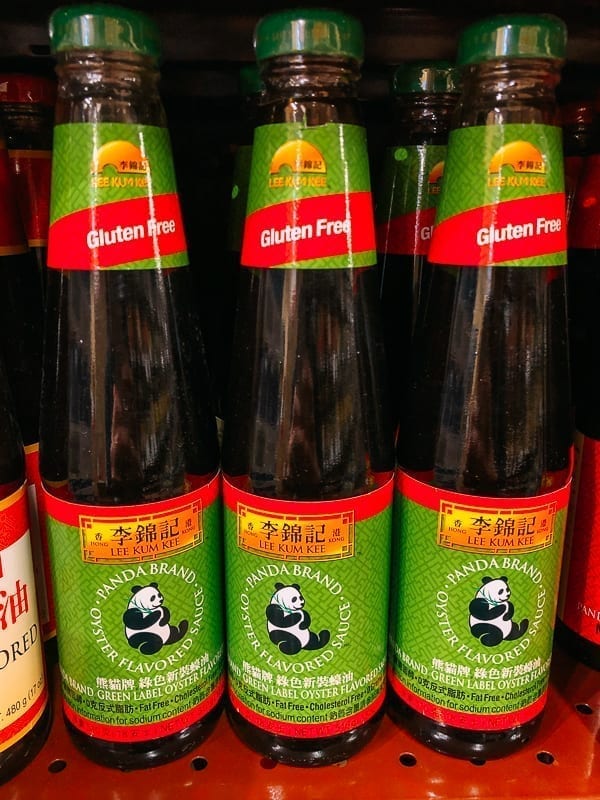
Vegetarian: For vegans and vegetarians, some brands offer an “oyster sauce” flavored with mushrooms instead of oysters. Find out more about the vegetarian version here.
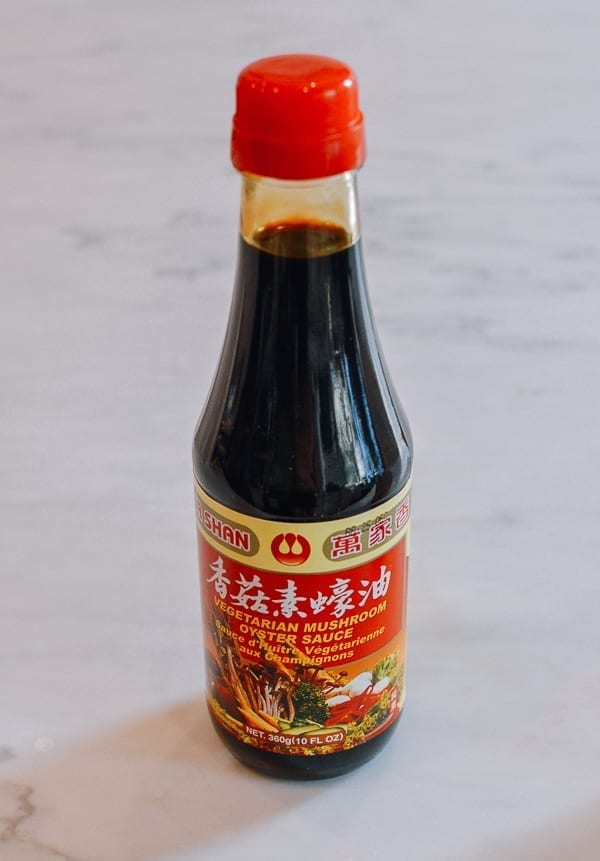
Substitutions for Oyster Sauce
If you don’t have oyster sauce or its vegetarian equivalent, and it isn’t the main flavor agent of the dish, you can substitute a vegetarian stir-fry sauce:
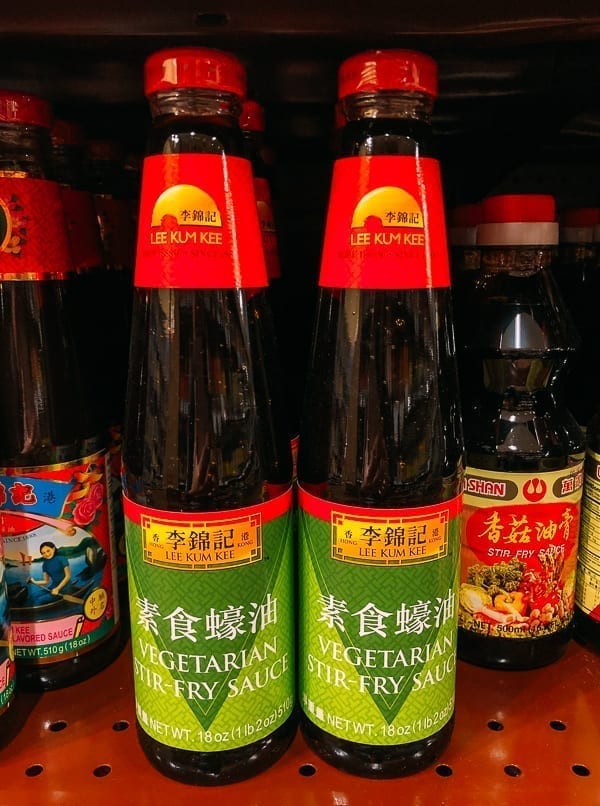
Our Favorite Dishes That Use This Ingredient:
If you have further questions, let us know in the comments––we try to answer every single one.


